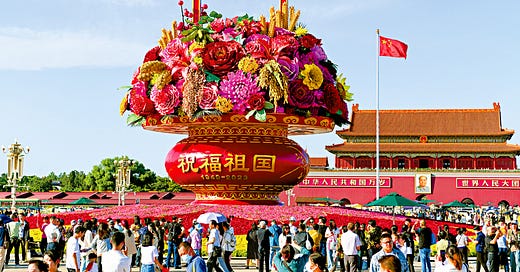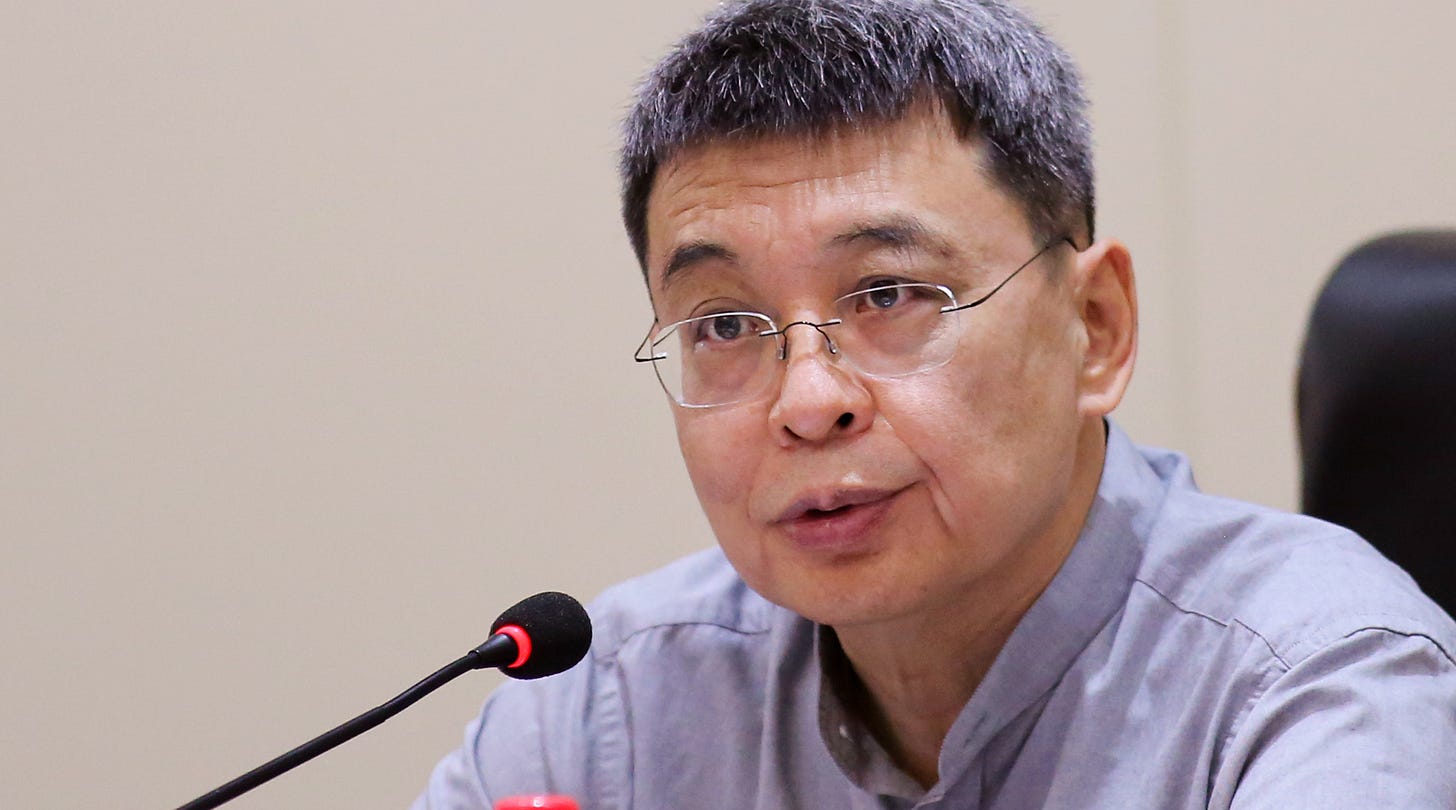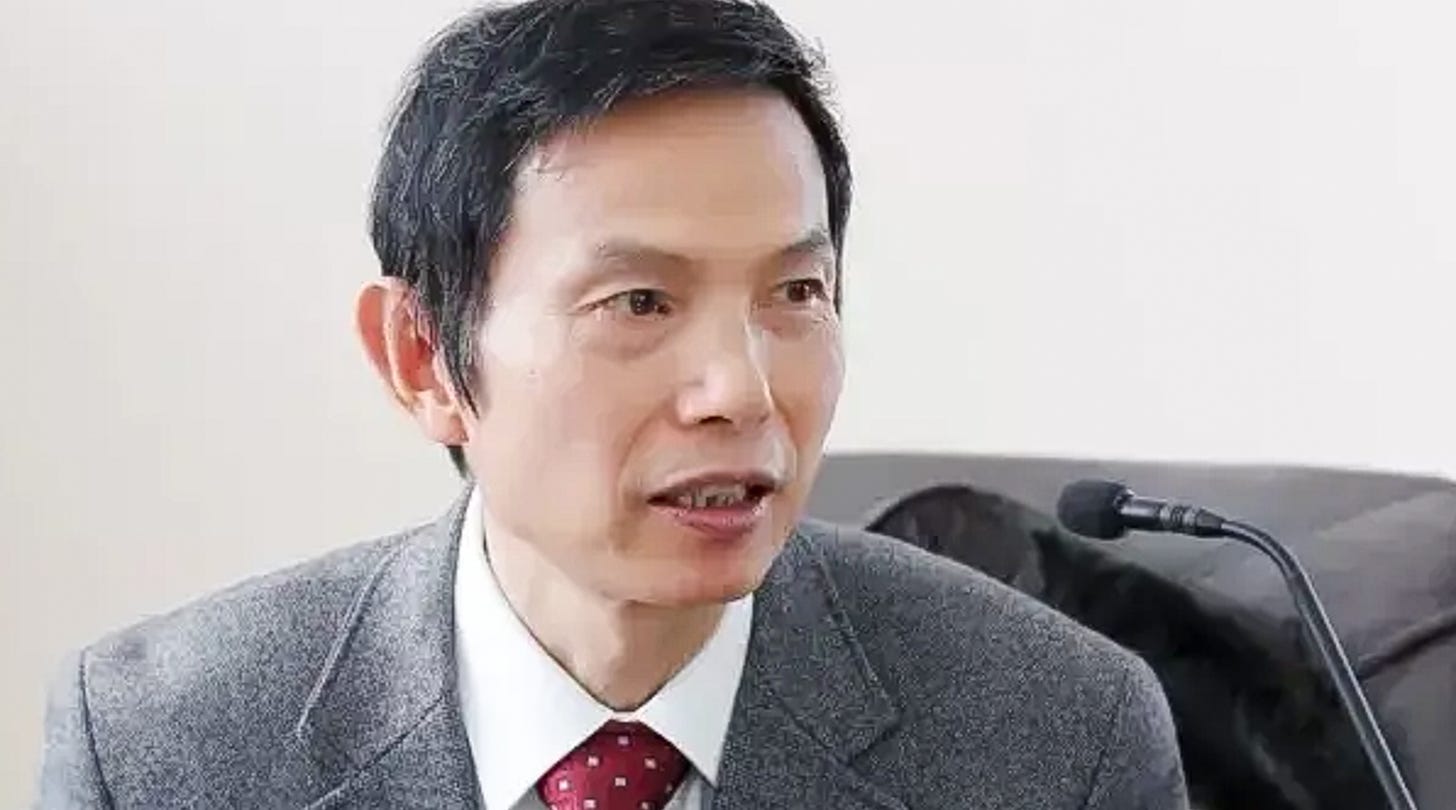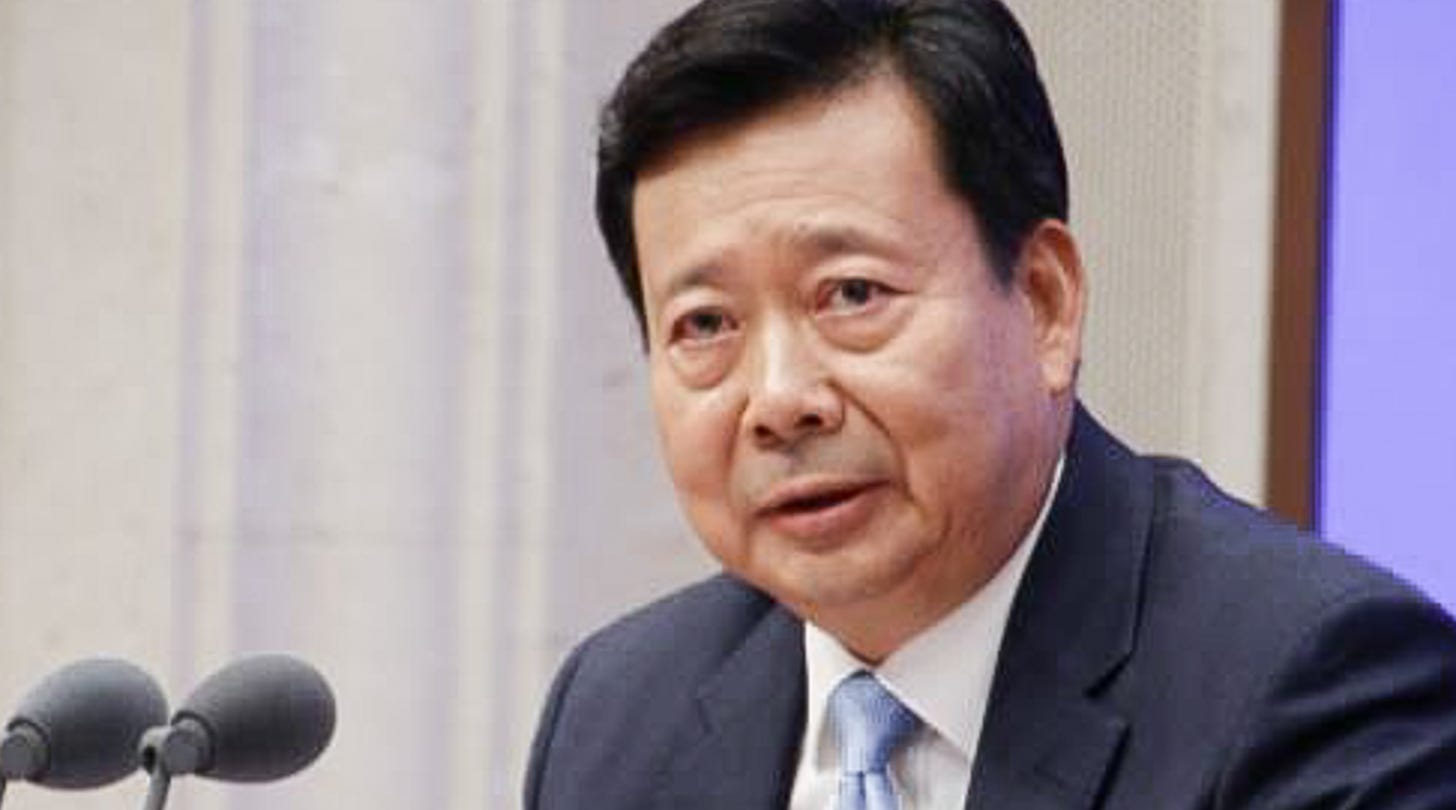
Warm welcome all…
In another brief reprinted from CHINA POLICY, we move away from the hard-edge of Xi Jinping’s development vision. We have looked at Beijing’s scitech high road from the angle of top-down design, and from the bottom-up rallying of the R&D community. Our recent post on the G60 techtopia trail looked at how it is playing out on the ground.
We now turn to society. Today, how the Party is moulding the historical and cultural narrative rallying the population behind an idealised Zhonghua (multi-ethnic identity) community. Here, the Han ethnic majority enjoys the eternal emulation of its non-Han compatriots—Tibetans, Uighurs, Mongolians, et al. Harmony trumps conflict and Han norms are the baseline, warding off Westernisation.
Happy reading
Philippa
revisiting Mao’s talks on literature and art of 1942, Xi Jinping feels impelled to set his stamp on the hearts and minds of the PRC population, marshalling vast resources to remould the national culture as he envisions
Retaining its grip over historical narratives is a first-order task for the CPC. While economic growth has fostered social cohesion up to a point, it generates rising expectations—to say nothing of corruption, inequity, and social dislocation—requiring yet tighter control of the narrative.
Claiming to accept the baton of both Marxist-Leninism and classical Chinese state governance, the CPC imposes weighty commitments on itself, without which it claims it would lose mass support.
New Era culture blueprint
Resources are hence devoted to narrative-building. The latest round began in October 2023, when the CPC CC (Central Committee) added a new theme to its guiding ideology, Xi Jinping 习近平 Thought. Under the rubric of ‘cultural doctrine’, the Party core proclaims ‘cultural confidence’ to be imperative in the face of Western hegemony. For PRC intellectuals and pundits, encasing humanistic and social science scholarship in a Sino-centric narrative was made less optional than ever.
Scholarship—evidence-based analysis—is required to support the Party’s domestic agenda while providing alternative political and historical readings for international scrutiny. Projected with deep political impetus, classical Chinese ideas are cherry-picked to enrich the Party’s ideological framework.
sinicising contemporary law
Proclaiming Chinese jurisprudence to be unique, not to say self-sufficient, legal scholars urge officials to reintegrate traditional legal thought with contemporary codes. Legalism (fǎjiā 法家), an ancient doctrine promoting authoritarian rule by law, is quietly regaining some of the awe accorded it by Mao at the height of the Cultural Revolution. Unlike under Mao, it has yet to be explicitly weaponised against Confucianism.
Cultivated in an era of internal conflict, Legalism deems law an instrument for boosting state power. In the interests of efficient governance, hamstrung by hereditary aristocracy, princes must strictly discipline their territories, making all subjects equal before the law. State interests trump all, with legal codes simply transmitting the imperial will.
Legalism remains valuable for safeguarding national unity, argues He Qinhua 何勤华 East China University of Political Science and Law. By employing sticks and carrots to secure national interests, subjects are taught to be fearful of and loyal to the regime, pacifying social discontent.
Such a regime entails strict oversight over officials and citizens, implying heavy bureaucratic workloads. The legal system of the Qing dynasty (1644-1911) succeeded in central-local sharing of these responsibilities, finds Zhang Sheng 张生 CASS (Chinese Academy of Social Science) Jurisprudence Research Institute.
He notes subtle ‘carrots’ distinguished the Qing multi-level judiciary: grassroots officials enjoyed final civil adjudication rights; only cases imposing harsher penalties than jailing or invoking major security concerns were passed up to Beijing. Local gentries were invited to ease civil mediation and official workloads. With heavy grassroots burdens a daily headline issue, the CPC might, suggests Zhang, take a leaf or two from the Qing book.
Legal reform must serve the national interest; this should not plead scholars, come at the cost of overt coercion. PRC rule by law is premised on the Party’s bedrock people-centric approach, reminds Gong Pixiang 公丕祥 Nanjing Normal University Law School. Drawing from ancient doctrine, Gong contends that rulers ought to cultivate virtue, eschewing abuse of power. By imposing penalties only after careful consideration, the authorities could foster a state of social harmony, which is in line with Marxist emancipation.
vindicating ethnic unity
Another agency deeply engaged in New Era cultural doctrine is the State Ethnic Affairs Commission, responsible for minority relations. Countering separatism, it promotes a united ‘Zhonghua national community’, where ‘Zhonghua’ flags the PRC’s multiple ethnicities, while ‘national community’ implies cultural homogeneity between them.
Zhonghua (pan-Chinese) cultural identity transcends territory, consanguinity or religious credo, argues Pan Yue 潘岳, State Ethnic Affairs Commission director and a Central United Front Work Department vice-director. A historical legacy, this identity is undergirded by inter-ethnic exchange and political unity. Coercion is rarely mentioned. Ethnicities are conjoined by common historical experience, notably under the imperial rule of courts based in the North China Plain.
The Commission hopes that revised narratives will reshape ethnic identities, merging preferences in ideology, religion, sense of belonging and culture.
representative culture
Ideology aside, commercial interests in play are key shaping factors. With provincial cooperation, the PRC is building a Yangtze National Cultural Park, linking Shanghai with a swathe of central and western provinces. Built to deepen ethnic identity and patriotism, it takes the Yangtze as a starting point to re-imagine imperial history. With Hubei as a pilot area, a Yangtze economic and cultural corridor will result, fostering a global cultural brand and drawing tourists.
Revitalise cultural relics, urges Li Qun 李群 NCHA (National Cultural Heritage Administration) director. While preserving existing relics, new representations of the heritage are needed. Under Xi’s demand, he launched a Chinese Civilisation Root-searching Project to help represent multi-ethnic unity.
Doctrinal innovation would then be popularised, with Party guidance. Undergraduate heritage textbooks will reflect the Party’s will, standardising how the Zhonghua cultural essence is represented, contends Gong Yongdan 巩永丹 Beihang University Marxist ideology school.
It’s imperative, on the literature and art front, for artists to blend traditional elements into their work, creating patriotic symbols that firewall national unity, declares Dong Yaopeng 董耀鹏 CFLAC (China Federation of Literary and Art Circles). This prescription differs from Mao’s notorious Talks on Literature and Art at the Yan’an Forum (1942), in skipping reference to Stalin-era Soviet Marxism-Leninism.
Talks at the Yan'an Forum on Literature and Art
Mao Zedong’s Talks at the Yan'an Forum on Literature and Art held in May 1942 were pivotal in shaping earlier cultural doctrine. Deeming culture a revolutionary weapon, Mao emphasised the political obligations of artists and writers.
Revolutionary culture had to align with the ‘correct development path’, supporting the CPC. A cultural army was needed alongside the military to unite and educate people and combat the enemy.
The Forum aimed to integrate literature and art with the revolution, defining the ‘class stand’ of writers and artists. Mao urged them to rid themselves of bourgeois influences, study Marxism-Leninism, grasp class relations, and conditions to create ‘correct’ literature and art.
monetising heritage
Spiritual enrichment should go hand in hand with building up culture industries, contends Wang Hui 王辉 Hunan Normal University Party committee. The state should protect them, he advises, while funding ‘culture workers’ to boost output. Traditional art forms should be revitalised and reimagined with an eye to contemporary aesthetic standards.
Officials urge content creators to integrate state-of-the-art tech into production in the interests of industry growth. Cloud computing, AI, and big data help speed up the creative process, enthuses Zhang Hongsen 张宏森, CWA (Chinese Writers Association) Party secretary. He insists on embracing digitalisation and adapting to growth-oriented industrial norms.
Meanwhile, the NCHA is keen to profit from heritage. Director Li Qun encourages provincial branches to commercialise local artefacts, fuse culture with tourism, and build archaeology parks and culture-themed tourist trails. Localities are on notice to cash in on regional features.
Cultural preservation could also support rural growth, attracting investment and talent to the countryside. Villages should market rural traditions, and the income earned should advance local agriculture, tourism, and education, says Nie Pingping 聂平平 Nanjing University. The goal is a market-oriented rural cultural industry supported by research institutes, social groups, and commercial firms.
Chinese spiritual civilisation
‘Cultural’ renovation is a hot topic. Pledging to restore Zhonghua civilisation to the splendour of its most prosperous eras is no small burden for Xi.
Not mere propaganda, this traditional legacy is defined as a guide to both domestic and global policymaking. The 3rd Party History High-Quality Forum (18 December 2023) instructed historians to detect historical cycles threatening Party rule. The 'dynastic cycle’ of rise and fall, unity and dispersal is a residual form of fatalism, foreordained to be averted by Xi alone.
The PRC is bringing about a cultural renaissance for humankind, proclaims Ye Xiaowen 叶小文 CPPCC (Chinese People’s Political Consultative Conference) Culture, History and Study Committee. The Party will draw on classical doctrine to rectify ‘Western bias’ towards human desire, rights and innate nature.
As the case of He Qinhua’s invocation of legalism shows, a distinctly non-Western mindset is never past its use-by date. It is indeed held up as superior to Western thought. Xi and his thinktanks moderate their tone from time to time, allowing for ‘digesting’ (selectively absorbing) non-Chinese culture. Yet the assumption remains that the excellent traditional culture is self-sufficient and could, in principle, have created everything of value. This stacking of the cards comes at a cost: the prefabricated texture of cultural goods approved by authorities proves to be difficult to market.
culture warriors
Pan Yue 潘岳 | State Ethnic Affairs Commission director and a Central United Front Work Department (CUFWD) vice-director
Chinese civilisation is unique in its uninterrupted multi-ethnic (Zhonghua or Sinic) lineage, contends Pan, point man for Party liaison with non-Han ethnicities. All dynastic rulers, whether Han, Manchu, Mongol or Turkic, deemed themselves part of the Zhonghua continuum. Opting in to Zhonghua identity, the ethnicities accepted dominant Han paradigms and hierarchies. All minorities within greater China are now a single identity under the CPC. Revitalising Zhonghua ‘cultural DNA’ via a graft of Marxism, the Party converts the historic legacy into a policy wellspring. Given political unity as an underlying cultural feature, the Party will resolutely defend its territory, shoring up ethnic cohesion.
Well-connected environmentalist Pan served for 14 years as a vice-minister of the former Ministry of Environmental Protection (MEP) and its successor, the Ministry of Ecology and Environment (MEE). Taking a more political role in 2016, he became Party Secretary of the Central Institute of Socialism. Thriving in the United Front system, he was promoted to CUFWD as a vice director, rising to direct the State Ethnic Affairs Commission in 2022.
He Qinhua 何勤华 | East China University of Political Science and Law professor
Borrow elements of classical Chinese legal culture, urges He, to build up contemporary legal knowledge. Vanishing with imperial China, the ancient legal system’s ideas and practices in fact survive, offering inspiration in advancing rule by law. Legal scholarship may draw on ancient jurisprudence, codices and ritual to refine the PRC legal system. Ancient jurisprudence laid down statutory law drawing on Confucianism, Legalism, Taoism and Buddhism. Its practitioners’ dedication to ‘rule by law’ saw it expand and evolve, turning practice into expertise. To inherit this professionalism, contemporaries need to blend Chinese philosophy with Marxism, compiling authoritative codices for use roday.
A seasoned jurist, He Qinhua was president of East China University of Political Science and Law for nine years. Stepping down in 2015, he remained a Chinese Judiciary Research Association vice-director. He is now the ECUPSL Legal Civilisation History Research Institute dean.
Li Qun 李群 | National Cultural Heritage Administration (NCHA) director and a Ministry of Culture and Tourism vice minister
Protecting cultural relics is, contends Li, vital to China’s literary heritage and ‘cultural DNA’ and ultimately to restoring ‘cultural confidence’. The NCHA should work to represent the Chinese culture and spirit. A Chinese-style, Sino-centric archaeology is needed to claim discursive power over the heritage. Studies should elucidate the founding of the Zhonghua nation as a unitary, multi-ethnic state. Modern revolutionary artefacts should be included in Party propaganda and patriotic education, promoting heroism and revolutionary spirit. Externally, Chinese relics should burnish cultural exchange, a core agenda of Xi’s Global Civilisation Initiative, portraying the PRC as a nation deeply rooted in humanist tradition.
Beginning his career in Shandong, Li worked in town governments and the Communist Youth League. A provincial propaganda department head by 2007, he rose over a decade to a vice-governorship, transferring to Beijing in 2018 as a Ministry of Culture and Tourism vice director.






